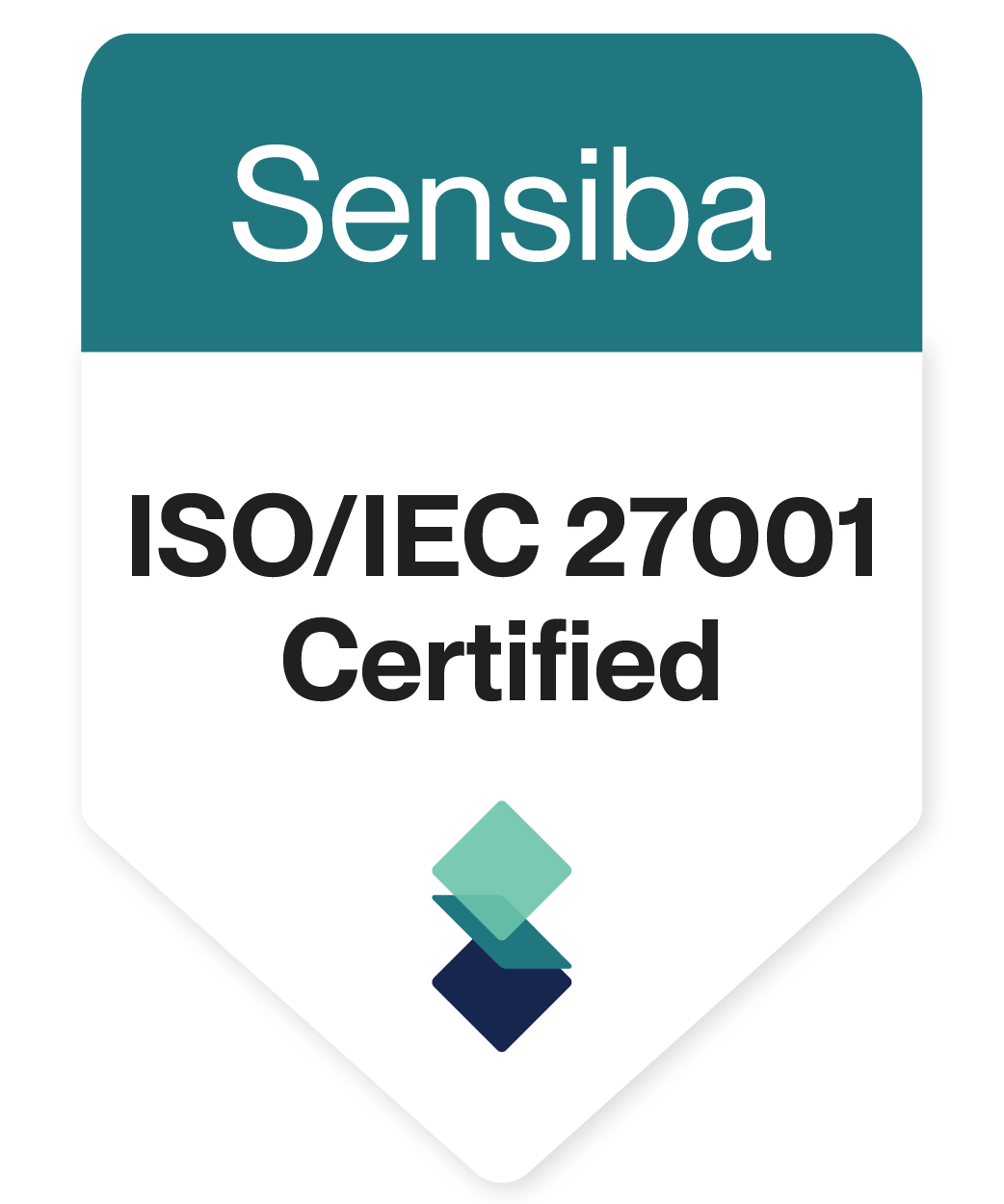Effective coaching is a critical element for success in any modern workplace. Without employee coaching conversations, leaders can struggle to motivate individuals, achieve high-performance levels, or retain top talent. Leaders face numerous challenges, including managing team dynamics, ensuring productivity, and developing individual potential.
It’s no wonder that organizations invest in helping their leaders upskill to become good coaches. A coaching culture is critical to successful leadership and can improve employee engagement. Plus, leaders who coach can increase professional development, enhance productivity, better identify high-potential employees, and ultimately, drive organizational growth.
Whether you’re a seasoned leader or new to coaching, keep reading to find valuable insights and actionable strategies for improving your coaching competencies to achieve better outcomes for your organization.

What Is Employee Coaching?
Employee coaching is a structured process through which leaders empower individuals and teams to achieve their full potential by drawing out their knowledge and ideas. It involves asking questions, providing feedback, and offering support to help employees overcome challenges and achieve their goals. By developing a coaching relationship with team members, leaders serve as thinking partners rather than managers to assist employees in self-directing to reach desired outcomes.
Coaching isn’t supposed to be used for everything. If someone asks where to find a specific file or spreadsheet – tell them! But when employees come to leaders with challenges to solve or goals to set, it is tempting to go into advising, training, or mentoring rather than coaching.
While coaching in the workplace isn’t a new idea, leaders and organizations still struggle to articulate what it is and how to empower their leaders to do it. As a result, some leaders may struggle to transition from the traditional “Boss” role to a more collaborative and empowering “Coach” role. (We even wrote a whole playbook about it here!).
Leaders who adopt a coaching approach can tap into the knowledge and ideas of their employees rather than simply directing them from a position of authority. Effective employee coaching operates from the belief that individuals are competent and resourceful, with leaders serving as facilitators rather than directors. This approach allows leaders to guide and support their employees’ development, leverage their existing skill sets, and enhance their problem-solving capabilities.
Real-World Examples of How Leaders Can Coach Employees
Imagine an employee approaches their leader with the desire to work towards a leadership position. In one scenario, the leader offers advice based on their own experience and suggests a book and a course in leadership. While nothing is inherently wrong with this approach, it may not be the most effective way to develop the employee.
In contrast, in a coaching scenario, the leader focuses on employee development by helping the individual to recognize their strengths and areas for growth, then offers support and guidance to help them create an action plan.

A Coaching In The Workplace Scenario
Scenario: An employee approaches their leader to express their ambition to grow into a leadership role within the organization.
Directive Management:
Leader: This sounds great. This reminds me of when I was first exploring leadership. I read this book that made all the difference and helped me to become the leader I am today. You should also check out a course in leadership to help you develop your communication skills.
Let’s stop this interaction here. Is there anything wrong with it? No. However, it’s more focused on the leader rather than the employee. It’s not horrible to share for the leader to share their favorite leadership book. Still, successful coaching takes the focus off of oneself to help reveal what’s driving the individual and support the employee’s progress.
Effective Workplace Coaching
Leader: This sounds like a good goal for you. What strengths do you want to leverage in a leadership role?
Employee: Well, I know that I like to problem solve like I did last week as we were approaching that deadline; I think I can use that skill, especially in our department.
Leader: That was extremely helpful when you helped us stay on track last week. I can see that as an asset for our department. What areas do you need the most support in when taking on a leadership role?
Employee: Well, I am pretty conflict avoidant. I tend to people please or shy away from having difficult conversations. I know I will need support here.
Leader: I think that’s a great area to focus on developing. How can I support you in developing that skill?
Do you recognize the difference? Employee coaching is about leveraging and developing the existing talent and ability of the person in the moment. A coaching process requires asking questions, providing constructive feedback, and offering support.
During coaching sessions, leaders may make assumptions and treat them as valid without confirming their accuracy. Coaches can better understand their employees’ perspectives, experiences, and challenges by adopting a curious approach. This approach can unlock their full potential by tapping into their unique strengths and capabilities, allowing them to thrive individually and as a part of the broader team.

HUMAN SKILL PROGRAMS ARE HITTING LIMITATIONS...
5 THINGS THIS FREE RESOURCE WILL TEACH YOU
- Close the widening gap between learning and on-the-job application
- Overcome the tension of pausing productivity for development opportunities
- Integrate learning so it is actually in the flow of work
- The evolution of human skill development
- What Automated Coaching™ is and how it works.
Unlocking Employee Potential: Exploring the Key Benefits of Employee Coaching
According to Up Coach, coaching in the workplace can increase employee engagement (67%), improve employee perceptions of leadership quality (60%), strengthen leadership bench strength (54%), improve productivity (50%), and enhance the quality of work (44%).
And yes, at the end of the day, coaching can affect the bottom line. About 63% of organizations that provide employee coaching report higher revenue and income growth than their competitors.
If you must, you can google down a rabbit hole of how to measure the ROI of coaching and how it affects engagement, or you can trust your instinct here. (We also share about defining the goal of coaching moments and how to measure if it is successful HERE.)

When companies invest in coaching skill training for their leaders or external coaching to support employee development and well-being, it helps team members experience a healthy work environment and improves retention.
It’s no secret that engagement can result in organizational loyalty. A loyal team member who feels invested in by their employer will often invest back into the organization through effort, quality outputs, and longevity.
Why Access To Coaching Is Essential For Employees
Think of an employee as a vehicle. The more fuel it receives and the more cylinders it runs on, the farther it travels and faster. Coaching is not only the language of leadership; it’s the ultimate employee performance accelerator. It encourages employees to be proactive about setting goals and navigating challenges and keeps them thinking.
Coaching is also something that shows its value subtly and over time. It’s not an overnight benefit; it’s the repetition of receiving coaching that ultimately opens the employee up to new possibilities, new ways of thinking, and new goals to set.
Allowing team members to engage in their own thought processes and explore what makes them effective can make them more intentional in their actions and decision-making.
Effective Strategies For Coaching Employees In The Workplace
In traditional coaching models, providing every employee a one-on-one personal coach is typically impossible. Therefore, empowering leaders to use coaching skills through comprehensive training solutions is fantastic. However, even that might not always be realistic; this is where Cloverleaf makes the difference.
Through Automated Coaching™, using personally curated assessment data, Cloverleaf provides that extra cylinder of support to employees daily. Supporting individuals and teams to leverage strengths and identify gaps, Cloverleaf offers relevant insights into the flow of work that usually remain blindspots within an individual or team.
By increasing the frequency of coaching moments, organizations can empower employees and teams to work to their potential and contribute their best work… who doesn’t want that?
Final Thoughts
Coaching is vital for any modern workplace to motivate employees, improve performance levels, and retain top talent. It’s no wonder more organizations are investing in helping their leaders upskill to become good coaches. Coaching is not just the language of leadership; it’s the ultimate employee performance accelerator. With the right approach and tools, organizations can empower employees to work to their potential and contribute their best work.
CINCINNATI – November 09, 2022 – Cloverleaf, an Automated Coaching™ technology designed to bring out the best in workers and teams, is partnering with The Ken Blanchard Companies® to bring more coaching resources to work teams and companies.
The Ken Blanchard Companies® define coaching as focused conversations that accelerate performance and development. With Blanchard’s coaching methodology and personal and team insights, and daily coaching from Cloverleaf, people are more likely to achieve their goals.
“Leveraging the power of Cloverleaf to augment Blanchard leadership development programs and coaching is such a great way to keep the momentum, reinforce new skills to become habits, and support teams as they develop along the continuum to high performance. The ease of having data in one place to better understand yourself and others is so powerful. We see this as a truly symbiotic relationship in which our solutions truly complement each other,” says Lael Good, Director of Global Consulting Services at The Ken Blanchard Companies.
According to Darrin Murriner, CEO of Cloverleaf, “The partnership with The Ken Blanchard Companies® will help us to offer more well-rounded coaching to our current and prospective Cloverleaf users. The rich content provided by Blanchard will help individuals and leaders to build relationships, develop leadership skills, overcome challenges and achieve their goals.”
Curated articles, blogs, podcasts, and research from The Ken Blanchard Companies are now available to users as part of the Resources Feed within the Cloverleaf platform. Start your 14-day team trial at Cloverleaf.me.
About Cloverleaf®
Cloverleaf is a powerful coaching tool that unleashes people to do their best work, together. Cloverleaf’s technology sends personalized, meaningful coaching tips that leverage respected psychology data from assessments like DISC, Enneagram, and Strengthscope. With a few sentences a day, we help every person tap into their unique value, build understanding, and improve collaboration.
Cloverleaf integrates seamlessly into the systems teams already use every day, including Google Workplace, Microsoft 365, and Slack. Companies like HP Enterprise, Kroger, and Monster Energy have already turned to Cloverleaf to maximize their organization’s talent.
Every month, Cloverleaf sends out millions of tips to more than one million users, 21,000 teams, and hundreds of coaches, helping people at the world’s best companies thrive at work. Start a free trial for your team at cloverleaf.me.
The Ken Blanchard Companies®
The Ken Blanchard Companies is a global leader in management training, consulting, and coaching. For more than 40 years, Blanchard has been helping organizations develop inspired leaders at all levels and create cultures of connection that unleash talent and deliver extraordinary results.
Blanchard’s SLII ® powers inspired leaders and is the leadership model of choice for more than 10,000 organizations worldwide. Blanchard also offers a suite of other award-winning leadership development solutions through flexible delivery modalities to meet the specific needs of its clients. Learn more at www.kenblanchard.com.

HUMAN SKILL PROGRAMS ARE HITTING LIMITATIONS...
5 THINGS THIS FREE RESOURCE WILL TEACH YOU
- Close the widening gap between learning and on-the-job application
- Overcome the tension of pausing productivity for development opportunities
- Integrate learning so it is actually in the flow of work
- The evolution of human skill development
- What Automated Coaching™ is and how it works.
The coaching industry is a dynamic and colorful industry. It has given us the likes of Tony Robbins, Marshall Goldsmith, and Sheila Goldgrab and helped millions of people discover who they are and how to succeed in whatever chapter of life they are in.
Though coaching has made its way into the mainstream and adopted new and innovative approaches to engaging with coachees, the model most coaches use to facilitate coaching moments hasn’t changed much in the past generation.
Most training and development resources still rely on information consumption models that are still susceptible to the forgetting curve hypothesis, which indicates that people’s memory, even of valuable information, will atrophy over time (and often very short periods of time) without good practices to retain it.
Plus, many assessment tools still use underlying research and analysis from Carl Jung and haven’t evolved much other than newer and fresher coats of paint (think colors instead of numbers, birds or animals instead of letters).
Even the coaching industry’s approach hasn’t changed much over the decades. Hourly sessions, at regular intervals, followed by the occasional check-in for accountability.
Valuable coaching conversations can lose momentum because they are confined to limitations familiar to common coaching approaches. However, in the moment coaching, especially within the workplace, is in greater demand and more relevant than ever.
Why Are Coaching Moments At Work So Valuable?
A coaching culture creates opportunities for managers and peers to help develop one another’s skills and performance.
Coaching is invaluable if an organization is to achieve its goals. It should be part of the continuous employee performance management by managers to maximize the potential of the employees. – quantic.edu
The benefits of a coach helping a team or individuals work through challenges can impact results that extend throughout the entire organization.
People are complex, and the best coaches consider context, realizing that every situation is different and requires nuance.
At Cloverleaf, we love coaches and believe strongly in the value they can provide to a team. But also believe it worth acknowledging that there are shortcomings to traditional coaching models that coaches and leaders need to consider.


HUMAN SKILL PROGRAMS ARE HITTING LIMITATIONS...
5 THINGS THIS FREE RESOURCE WILL TEACH YOU
- Close the widening gap between learning and on-the-job application
- Overcome the tension of pausing productivity for development opportunities
- Integrate learning so it is actually in the flow of work
- The evolution of human skill development
- What Automated Coaching™ is and how it works.
3 Challenges To Traditional Coaching Models:
Scalability
- Providing a human coach for everyone in the organization is cost prohibitive, and finding or training enough available coaches is difficult. Not to mention that there are diminishing marginal returns if everyone had a coach.
Timeliness
- A once-a-month connection between an individual and their coach can restrict relevant, timely coaching specific to the immediate problems that managers, leaders, or individuals face throughout their days/months.
Measurable Impact
- Proving and improving impact has been a challenge for the industry.

Often, even the best coaching relationships may only make the coachee feel better that they are doing something to improve themselves. But what about the ability to verify clear, measurable outcomes that indicate organizational results?
Measurement is another critical area where there hasn’t been much innovation in coaching solutions. Solving these three significant problems requires defining the long-term goal of coaching in the workplace.
What Is The Goal Of A Coaching Moment?
When I ask people in our network about their experience with a coach, they will often recall the last coaching session and point to some insight or discovery gained during that session.
Next, I follow up with a question about frequency – specifically, how many of these insights they typically encounter during an average 1-hour session. They may pull out a notebook and reference 3-5 bullet points of takeaways.
Typically, to measure the impact of those 3-5 insights, one could consider several points of impact:
- Leadership effectiveness
- Performance reviews
- 360 scores
While these are important indicators, the measurable impact of the coaching is limited because they only reflect a point in time concerning the individual (often without ongoing measurement or prone to inconsistent measurement over time.)
Plus, there are several additional factors (pay, relationships, proximity to the work, etc.) that can skew the results.
There is room for improvement. At Cloverleaf, we have a North Star that guides our measurement of successful employee coaching to ensure it is precise and worthwhile. It also influences all the product features and market decisions we make.
We call this North Star – ‘Successful Coaching Moments.’
The goal of every coaching moment in the workplace should be to improve emotional intelligence, collaboration, and organizational impact.
To determine our proximity to reaching this North Star, we measure the following elements (like any good North Star metric):
Reach or breadth of people (known internally as coached users)
- This element reflects how many team members or employees within an organization are impacted by Cloverleaf’s Automated Coaching™.
Depth or levels of impact (known internally as successful coaching per day)
- Unlike most coaching practices that depend on the 3-5 insights gathered within a 1 hour per month session – Cloverleaf’s typical user experiences, on average, nine successful coaching moments per day.
Frequency (known internally as days coached per month)
- Cloverleaf can help you reach clients and teams daily. Rather than waiting weeks until the next coaching session, coaches can foster consistent development to keep their clients on track.
Measuring the reach, depth, and frequency of the coaching at work teams’ experience provides context that can ensure ongoing coaching in the workplace is happening and that users are less susceptible to pitfalls like the forgetting curve or slow progress.
At this point, the big question you may ask yourself is, ‘how do we know if in the moment coaching tips are successful?’
After all, that is the key to overcoming the current shortcomings of standard approaches to coaching and capturing true impact. Further still, how can we ensure that results are accurate and not impacted by several other factors? How do we PROVE that Automated Coaching™ is successful?
How To Know If Coaching Moments Are Successful Within Your Team
The best way to determine if coaching is successfully impacting your team is by using data that can indicate an increase in emotional intelligence, improvement in collaboration, and organizational performance.
Additionally, gaining a pulse on team culture and how applicable the coaching is can help leaders accurately assess the value of in the moment coaching.
With Cloverleaf, coachees can rate every piece of coaching content. With each coaching tip, we ask simple questions like, was this coaching helpful? This immediate feedback is a starting point for users to provide even more context concerning the effectiveness and relevance of the coaching they receive.


Next, team members can respond to additional contextual questions concerning why that coaching was helpful or unhelpful.
All of these data points are significant because they offer insight that correlates with the team and organizational sentiment, relevance to their role, and the ROI of Automated Coaching™.
The Big Question
The most important question is, how do we know that Automated Coaching™ improves emotional intelligence, team effectiveness, or belonging?
Cloverleaf’s Chief Research Officer, Scott Dust, runs regressions against the data to isolate the impact of Cloverleaf on outcomes, and here are some of the results.
Our monster pilot data essentially says that as the number of coaching moments increases, so does the increase in (a) team effectiveness, (b) feeling recognized by team members, and (c) feeling as if one’s strengths are valued by others.
These are great results, and we plan to further extend this analysis. We believe that Cloverleaf (an Automated Coaching™ solution) when used in conjunction with a human coach, can take employee and organizational development to even greater heights.
Cloverleaf is helping People Strategy Leaders change how they develop their leaders. Scaling coaching opportunities for leaders and managers is possible with access to popular validated assessments, personalized dashboards, and in-the-moment coaching tips.

Discover why Cloverleaf is the all-in-one tool for boosting emotional intelligence in the workplace. Schedule a demo to learn more about Cloverleaf ‘s impact on leadership development, managerial effectiveness, and driving behavioral change.
Potential is such a loaded word and can be incredibly subjective. Yet we throw it around a lot in leadership development circles. In fact, multiple talent management models (including the popular 9 Box approach) use potential as a cornerstone element.
When leadership performance and potential are assessed and plotted on the graph, individuals in the upper right quadrant (Box 1) are identified as high-potential candidates for succession, while those in the lower left quadrant (Box 9) may need to be reassigned or removed from the organization. – shrm.org
Identifying high-potential employees should be on the radar of every leader; however, using a definition for hipo (high-potential) team members that clarifies how your organization recognizes and retains top talent is crucial.
How to Identify High-Potential Employees
The most important thing your team can do to retain future leaders is move from a fixed mindset concerning high-potential employees to a growth mindset.
What actually is potential? According to the dictionary, it is “having or showing the capacity to become or develop into something in the future.”
The problem talent management leaders face is we all have different definitions for what that something is. In other words, what is the “something” you are developing hipo individuals into?
Depending on the organization, role, experience, or your manager’s perspective, potential can mean many things.
One challenge with defining what is ‘potential’ in organizations is that the process of gauging it is elusive and imprecise — and can be highly subjective. And despite what some leaders would like to believe, potential does not equate to current or past performance. – shrm.org.
What I typically hear when I ask others what they mean by the term potential is “management potential.” This definition implies that those who want a technical or craft-focused role have no potential for that organization over the intermediate or long term.
And this is precisely why using potential as a key component of talent evaluation is so dangerous. The criteria for how a CTO evaluates potential relative to a Sales Manager or Marketing Leader vary widely.
This mentality is a fixed mindset approach to talent evaluation that only sees the world in black and white (possibly with some limited shades of gray) instead of being full of vibrant color.

What Do You Want Employees To Have High Potential For?
Limiting a team member’s potential to a specific role will decrease your ability to mentor growth opportunities that are much more expansive than a position and more valuable to your organization.
If your only lens for evaluating potential is fixed according to your organization’s immediate needs rather than using a spectrum that empowers top talent to contribute and even create new ways of providing value, you will hinder future leaders.
…science reveals that regardless of the context, job, and industry, such individuals tend to share a range of measurable qualities, which can be identified fairly early in the process. – hbr.org
Another definition of potential is “qualities or abilities that may be developed and lead to future success.” I like this definition much better, and it should represent how talent management views the potential of their workforce.
To identify high-potential employees, leaders must expand their definition of potential to include room for the unique value that every team member offers. Next, mentor hipo individuals to empower them to contribute significantly to the organization.
The reality is that everyone on your team has potential. At Cloverleaf, we have a saying that ‘everyone has value.’
How our team aligns this value with the organization’s needs is fluid. We work to manage this dynamic rather than control it because we believe it grants freedom for our team to contribute their best work uniquely.
Would you rather help develop someone’s potential towards a fixed expectation or increase their capacity to add value?
Strictly adhering to labels like potential without mentoring team members to develop their unique leadership will minimize or cap the value each person brings to our teams and organizations.

HUMAN SKILL PROGRAMS ARE HITTING LIMITATIONS...
5 THINGS THIS FREE RESOURCE WILL TEACH YOU
- Close the widening gap between learning and on-the-job application
- Overcome the tension of pausing productivity for development opportunities
- Integrate learning so it is actually in the flow of work
- The evolution of human skill development
- What Automated Coaching™ is and how it works.
3 Effective Ways To Ensure You Consistently Develop High-Potential Employees To Provide Value
Adopting the belief that everyone has value (or potential) will impact how we lead, build culture, and make talent decisions. Doing so can help leaders increase collaboration and productivity as they choose to honor, empower, and coach hipo employees.
Here are three ways to effectively build a culture of developing high-potential employees:
1. Prioritize Coaching For Your Team That Is Personalized And Values-Based.
The Cloverleaf team uses our integrated coaching product to constantly reinforce these unique elements of value brought by each team member in a way that broadens everyone’s view of potential over time.
For example, imagine helping your team to further realize their strengths and those of their teammates.
Providing your team with relevant insights into themselves and those they work with will boost self-awareness, strengthen collaborative efforts, and minimize workplace drama.


2. Embed Recognition Of One Another’s Unique Value Into Your Teams Rhythms And Rituals.
Creating a practice that habituates celebrating team members’ competencies and accomplishments is a powerful way to supplement your employee development strategy.
This practice can include an all-team lunch weekly through Zoom, shout-outs that are rewarded with bonus opportunities, quarterly all-team off-sites, and regular team coaching sessions.
3. Allow Team Members Roles To Evolve Based On Their Motivation And Strengths.
Facilitating space for individuals to pivot within your organization that aligns with their giftings and natural drivers organically creates development opportunities for your entire team.
Although Cloverleaf is a smaller team, we have a track record of Internal mobility where roles evolve as stronger recognition of an individual’s strengths and interests surface. Repeatedly, we experience the benefits of innovation and engagement by permitting these types of transitions.
In Summary
It’s possible to limit your team’s potential by limiting your definition of what it means to develop it.
We should expand the definition of potential and create pathways for everyone to understand the unique value inherent in each of us and seek to align that with the needs of our organizations.
Stop using antiquated methods to identify high-potential employees according to the organization’s current needs. I encourage talent and people leaders to develop potential by fostering and coaching the inherent value each member offers your team.
You can begin the journey of multiplying your team’s potential by starting a free trial with Cloverleaf today.


